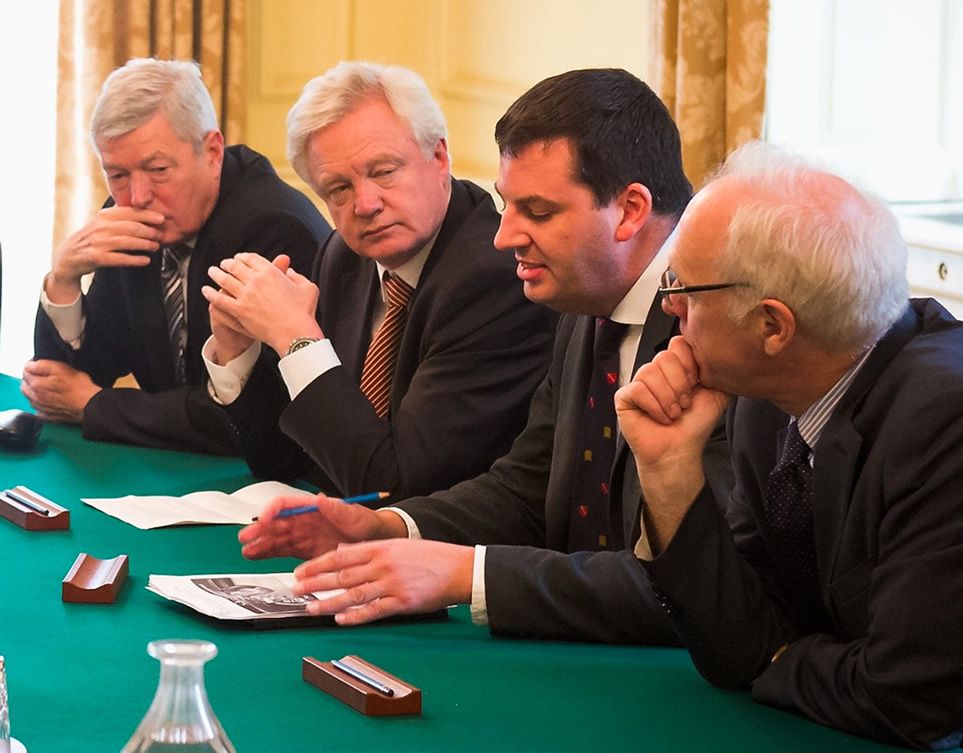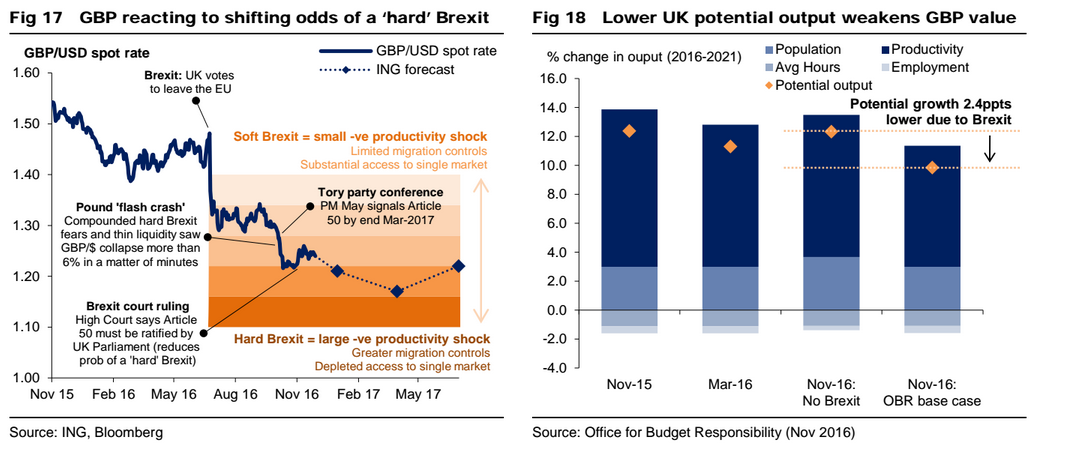ING Forecast Pound to Fall Back to 1.11 Against the Euro in 2017
- Written by: Gary Howes

Above, David Davis, second from let, said the UK would potentially pay for access to the single market, something GBP bulls liked.
Pound Sterling retains a bullish bias thanks to the evolving Brexit story and a move to 1.20 remains on the cards but analysts at ING eye a fall back towards 1.11 over coming months.
Pound Sterling surged against the Euro on news that the UK Government would consider paying for full access to the EU's single market.
The GBP/EUR conversion achieved its best level since the start of September having hit 1.1948 at one stage.
At the time of writing the mid-market rate is at 1.1870 with retail rates being offered in the region of 1.1450 and 1.1760, depending on who your supplier is.
The news was delivered in an answer by the Brexit Secretary David Davis in the House of Commons on Thursday.
During questions in the House of Commons, Labour MP Wayne David asked if the Brexit secretary would “consider making any contribution in any shape or form for access to the single market”.
Davis said the government would look at the options during the article 50 process over the next two years.
“The major criterion here is that we get the best possible access for goods and services to the European market,” he said. “And if that is included in what he is talking about, then of course we would consider it.”
Businesses and markets will welcome any commitment on seeking full access to the single market as it removes a major layer of uncertainty that has been hanging over the whole Brexit debate for weeks.
"The remarks could be a sign that the Government still might try to avoid what is known as a hard Brexit and instead settle for a more compromising exit," says Thomas Nilsson at SEB. "The advance shows how sensitive the Pound currently is to comments regarding the future relationship the UK will have with EU."
Momentum remains positively aligned for Sterling at present and analysts at Lloyds Bank forecast the exchange rate to ultimately hit 1.20.
The gains in Sterling also come on a combination of rising UK gilt yields, a continued technical short-covering move, increased nerves over European politics.
Looking ahead Neil Wilson at ETX Capital reminds us that weekend events in Italy could be interesting, saying, "the Pound has reached its best level against the Euro since September as the clouds of uncertainty over Italy’s referendum weighs on the single currency. We could get a further fall in the Euro if Italy votes No on Sunday."

GBP/EUR
Daily Chart Showing live Inter-Bank Rate and Indicative Rates for International Payments.
ING: Pound will Fall Against the Euro in 2017
It's been a strong few weeks for Sterling, but the good run is destined to fade we are told.
Strategists at ING have this week have released their forecasts for 2017 which show the long-term equilibrium for GBP/EUR lying at lower levels.
The Pound must fall to reflect the uncertainty that is expected to characterise the political, economic and financial outlook as the UK moves through the Brexit negotiation period.
According to analysts at ING, Brexit means the UK economy will undergo a structural shift which must be reflected in a lower long-run range for Pound Sterling.
“The lack of tangible details over the ‘when, what and hows’ of the UK’s future trading arrangements with Europe has meant that markets have been left to play a guessing game,” says ING’s Viraj Patel in London.
For ING, GBP price action since Brexit has been reflective of some weighted distribution of the various endgame outcomes, with the probabilities shifting as developments unfold:

“We believe the broader risks to GBP continue to lie to the downside – at least until the tail-risk of a ‘messy divorce’ has been taken off the table,” says Patel.
New Risks to Consider in 2017
Patel and his team suspect the guessing game in markets may continue for a bit longer.
GBP is likely to bear the brunt of this lack of political transparency, while further uncertainty over the UK’s eventual degree of access to the EU single market could see the emergence of new unaccounted risks:
_____
- Domestic political risks: Risks of an early general election to linger as UK politicians
remain split on the optimal Brexit strategy. Calls for a second Scottish independence
referendum would gather momentum if substantial single market access is conceded. - External stability risks: Ongoing uncertainty may not only see a slowdown in inward
FDI flows, but a possible reversal of capital flows that would derail UK asset markets.
_____
Where other analysts have ditched calls for further Bank of England interest rate cuts and/or an extension to the quantitative easing programme, ING see things differently.
The first half of 2017 is forecast to provide a tricky backdrop for GBP as the Bank of England is likely to follow-up with a Bank rate cut to the lower bound (and an extension of QE) in response to a slowdown in the real economy.
We would imagine that a notable slowdown in economic growth will be required over the next few weeks to support this view.
With UK GDP growth at around 2.5% on an annualised basis for the third quarter we would agree with those who doubt further interest rate cuts are likely in 2016.
Nevertheless, longer-term growth is certainly up for debate.
“Uncertainty over the size of the negative long-run productivity shock (stemming from a lack of economic openness) means that we are cautious over calling for GBP upside until all the potential ‘bad news’ is in the price,” says Patel.
ING’s Forecasts for the Pound Against the Euro for 2017
EUR/GBP:
Q1 0.87
Q2 0.90
Q3 0.90
Q4 0.90
GBP/EUR:
Q1 1.1494
Q2 1.11
Q3 1.11
Q4 1.11




